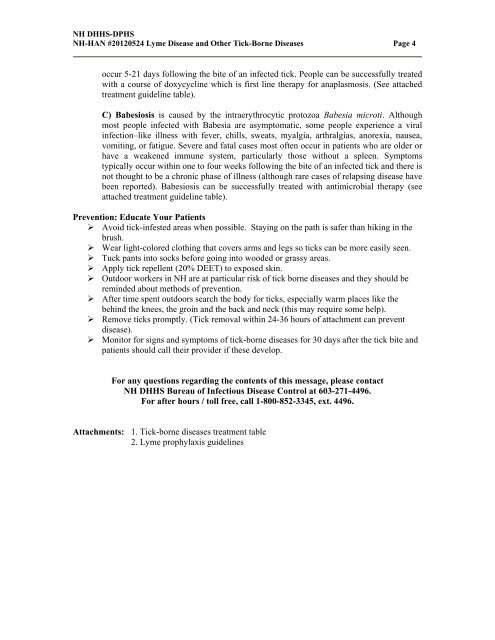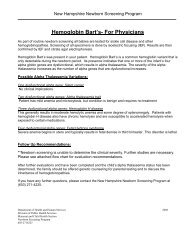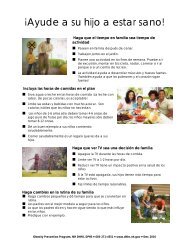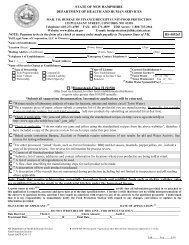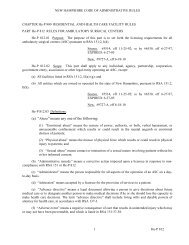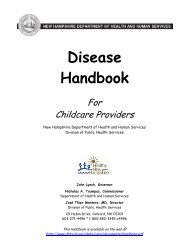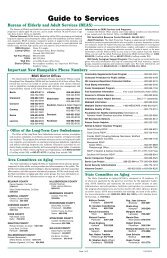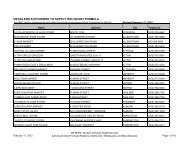Lyme Disease and Other Tick-Borne Diseases - New Hampshire ...
Lyme Disease and Other Tick-Borne Diseases - New Hampshire ...
Lyme Disease and Other Tick-Borne Diseases - New Hampshire ...
You also want an ePaper? Increase the reach of your titles
YUMPU automatically turns print PDFs into web optimized ePapers that Google loves.
NH DHHS-DPHS<br />
NH-HAN #20120524 <strong>Lyme</strong> <strong>Disease</strong> <strong>and</strong> <strong>Other</strong> <strong>Tick</strong>-<strong>Borne</strong> <strong>Disease</strong>s Page 4<br />
occur 5-21 days following the bite of an infected tick. People can be successfully treated<br />
with a course of doxycycline which is first line therapy for anaplasmosis. (See attached<br />
treatment guideline table).<br />
C) Babesiosis is caused by the intraerythrocytic protozoa Babesia microti. Although<br />
most people infected with Babesia are asymptomatic, some people experience a viral<br />
infection–like illness with fever, chills, sweats, myalgia, arthralgias, anorexia, nausea,<br />
vomiting, or fatigue. Severe <strong>and</strong> fatal cases most often occur in patients who are older or<br />
have a weakened immune system, particularly those without a spleen. Symptoms<br />
typically occur within one to four weeks following the bite of an infected tick <strong>and</strong> there is<br />
not thought to be a chronic phase of illness (although rare cases of relapsing disease have<br />
been reported). Babesiosis can be successfully treated with antimicrobial therapy (see<br />
attached treatment guideline table).<br />
Prevention: Educate Your Patients<br />
‣ Avoid tick-infested areas when possible. Staying on the path is safer than hiking in the<br />
brush.<br />
‣ Wear light-colored clothing that covers arms <strong>and</strong> legs so ticks can be more easily seen.<br />
‣ Tuck pants into socks before going into wooded or grassy areas.<br />
‣ Apply tick repellent (20% DEET) to exposed skin.<br />
‣ Outdoor workers in NH are at particular risk of tick borne diseases <strong>and</strong> they should be<br />
reminded about methods of prevention.<br />
‣ After time spent outdoors search the body for ticks, especially warm places like the<br />
behind the knees, the groin <strong>and</strong> the back <strong>and</strong> neck (this may require some help).<br />
‣ Remove ticks promptly. (<strong>Tick</strong> removal within 24-36 hours of attachment can prevent<br />
disease).<br />
‣ Monitor for signs <strong>and</strong> symptoms of tick-borne diseases for 30 days after the tick bite <strong>and</strong><br />
patients should call their provider if these develop.<br />
For any questions regarding the contents of this message, please contact<br />
NH DHHS Bureau of Infectious <strong>Disease</strong> Control at 603-271-4496.<br />
For after hours / toll free, call 1-800-852-3345, ext. 4496.<br />
Attachments: 1. <strong>Tick</strong>-borne diseases treatment table<br />
2. <strong>Lyme</strong> prophylaxis guidelines


